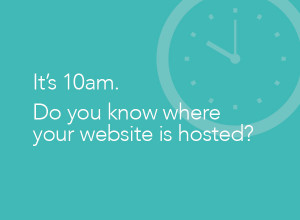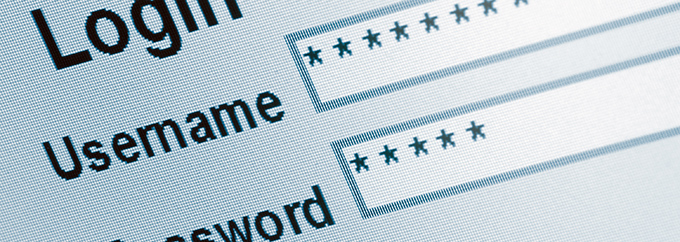We have a lot of clients coming to us with websites that need refreshing or a complete overhaul due to age/outdated functionality, neglect or lack of good content or design. One thing we run into a lot is a lack of knowledge on the clients part as to where their current site resides and who has the “keys” (or what they are) to the site’s hosting platform, backend, email, etc. The following are five things that you really should know about your website:
1. Who is Your Registrar?
Some of you might be asking “What is a registrar?” This is where your domain (www.yourbiz.com) is registered and is likely where you (or someone) first purchased the domain. GoDaddy, Dotster, Network Solutions and the like are some examples. Your website (if you have one yet) may or may not be hosted with this same company. You should have a username and password to this account – this is your brand’s online address, which leads us to…
2. Be the Master of Your Domain
 I can’t emphasize this enough. Many times we get clients that are worried about leaving the company that built their current site because that company purchased the URL (domain name) for them when they built the site. Most people are reputable, but if they’ve had a bad experience with them they fear they may hold it back from them or charge them a lot of money for it.
I can’t emphasize this enough. Many times we get clients that are worried about leaving the company that built their current site because that company purchased the URL (domain name) for them when they built the site. Most people are reputable, but if they’ve had a bad experience with them they fear they may hold it back from them or charge them a lot of money for it.
First, check the Whois database for your URL, you can do a search for “whois” or check the company you registered the name with (see above) such as GoDaddy. Look down the resulting list for “Registrant Name” – if your name is there, you’re good. At least you technically own the domain, we suggest you actually have an account with the registrar (see #1) and pay for the domain yourself – preferably for at least 3-5 years up front (this helps with SEO – showing that you mean to be around for the long term). If you are NOT listed under Registrant Name, contact the person who is. This should be someone you know, if not they should be associated with a company you work with (look under “Registrant Organization”). Have them make you the Owner. Your web company should at best be listed under “Technical Contact” – unless you have someone in your organization (an IT manager) who could be listed here.
3. Control Your Hosting
Imagine you have a brick and mortar store (and you may) and that you are somehow subleasing the space, you have no relationship with the buildings owner, just a passive agreement with the person leasing it from them. One day, that person decides to stop leasing from the owner and you have no choice but to disrupt your business and move it somewhere else. or worse, you lose contact with that person and you have no keys to get to your business assets!
This is why we setup our clients with hosting under their name – in an account they own and pay for directly. We add ourselves as technical contact so that, should any technical issues arise, we’re notified as well and can deal with them for our client. If you don’t control your own hosting account, make sure you have a contract that protects you should your relationship with whomever does is severed for any reason. Also…
4. Know User Names & Passwords
FTP, databases, email, CMS, hosting/registrar, analytics, social media accounts – even if you never go near the settings or login to some of these (and some you shouldn’t if you don’t know what you’re doing – when in doubt ask your web team!) you should have a list of credentials (usernames & passwords) for all of them safely stored in a password protected, backed-up folder or password-storage application on your computer and/or stored in an envelope in a safe or safe-deposit box at your bank. If you only store them on your computer, make sure you are regularly backing up the file, preferably to a reputable off-site backup service. If you’re at a large company there should be at least 2-3 people who have access to these. If someone leaves, others still have access. And if someone DOES leave – they should ALL be changed immediately or prior to that person leaving.
While we’re on it, if you are creating any of these passwords, DON’T use actual words (kids/pets names, etc) in your passwords. Most need to be at least eight characters long – make them longer if you can and use a series of random uppercase, lowercase, numbers and any allowed characters (? ! @). Yes, it will take longer to put them in, but that means it will take someone longer to hack them (if they can at all).
5. Be up on your platform.
You may have heard your web team mention “Joomla” or “Drupal”. These are not character from “Game of Thrones” but platforms. Just like a house, a platform is a structure that a website is built on. WordPress, Umbraco and CodeIgniter are other examples and there are many, many more out there. Some sites are completely custom built, but more and more are being built on top of a structure that makes building a site faster and easier to maintain. The point here is not to know everything about the platform your site is built on, but to at least KNOW what that platform is. If for some reason you need to switch your web team or your internal web deigner/developer, you’ll know how to describe to the new team what they’ll be working on.
Is that all? No. There are things that relate more to SEO, Security, Databases and more to know as well, but if you have these five taken care of you’ll save yourself and your web team a lot of time and effort!

